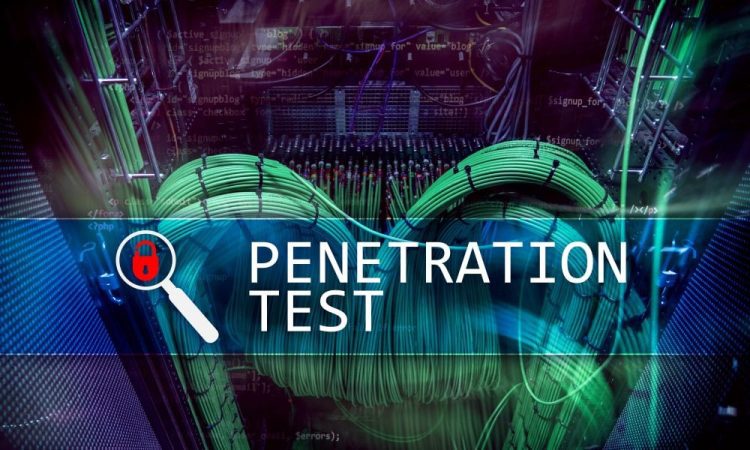Cyber threats are a significant concern for both individuals and organisations in the swiftly evolving digital landscape. As modern infrastructures continue to be dominated by technological advancements, the necessity for comprehensive cybersecurity measures becomes increasingly prominent. Thorough penetration testing is one of the most effective methods for guaranteeing the security of an application. OWASP penetration testing is a definitive guide for safeguarding web applications, despite the availability of a plethora of frameworks for conducting these tests.
The OWASP, or Open Web Application Security Project, is an open-source initiative that is designed to improve the security of software. It is renowned for its influential resources, which assist developers and security professionals in addressing the most pressing security concerns in the industry. OWASP’s primary objective is to enhance software security by offering freely accessible articles, methodologies, documentation, and tools.
The process of evaluating the security of an application by simulating real-world assaults is referred to as OWASP penetration testing. The objective is to identify vulnerabilities that may be exploited by adversaries. Organisations can fortify their infrastructure against potential breaches, safeguard sensitive data, and mitigate risks by comprehending these weaknesses. OWASP adeptly provides a comprehensive and structured framework that is essential for successful penetration testing.
The OWASP Top Ten is a powerful document that outlines the most critical security risks to web applications and is a fundamental component of OWASP’s offering. The OWASP Top Ten is a fundamental resource for penetration testers who are committed to the effective protection of applications. It is updated every few years. It addresses vulnerabilities such as injection, faulty authentication, sensitive data exposure, and others, each of which necessitates vigilant examination during testing.
Each phase of OWASP penetration testing is designed to meticulously assess the security posture of an application. Reconnaissance is the initial phase, during which testers accumulate as much information as feasible regarding the target system. Testers can develop more effective and targeted assault scenarios by comprehending the application’s architecture, technologies, and ecosystem. Throughout this phase, testers utilise publicly accessible resources and tools, including search engines and social media, to accumulate comprehensive insights regarding the target.
Scanning is the subsequent critical aspect following reconnaissance. Here, OWASP penetration testing concentrates on the identification of endpoints, network surveillance, and the comprehension of the application’s interaction with its environment. This phase frequently entail the analysis of application responses, the identification of services in use, and the use of automated scanning tools to detect open ports. The objective is to develop an assault surface map that will serve as a blueprint for subsequent testing endeavours.
The assessment process advances to the exploitation phase upon the completion of scanning. This is the stage at which testers actively attempt to compromise the application’s defences by exploiting identified vulnerabilities. The utilisation of a diverse array of techniques, spanning from fundamental to sophisticated exploitation scenarios, is guaranteed by OWASP penetration testing. SQL injection, XSS (cross-site scripting), misconfigurations, and faulty access controls are among the most prevalent targets. Testers endeavour to determine the real-world consequences of potential exploits by conducting controlled attacks in a secure environment.
Nevertheless, OWASP penetration testing does not conclude with exploitation. Additionally, it encompasses a critical analysis phase referred to as post-exploitation. In this phase, evaluators evaluate the potential damage that could result from a genuine attacker’s success. It entails comprehending the extent to which data could be extracted or altered, as well as the systems that could be impacted. This is crucial because it enables organisations to comprehend vulnerabilities and recognise their potential repercussions.
Documentation and reporting become increasingly important as the testing concludes. The significance of detailed and unambiguous reporting is underscored by OWASP penetration testing. Comprehensive reports that delineate the identified vulnerabilities, their potential impact, and recommendations for remediation are generated by testers. This step is essential for guaranteeing that security teams can establish effective measures to protect against potential hazards that may be identified during testing.
Continuous refinement is an essential component of the OWASP penetration testing philosophy. Security is a perpetual process, rather than a one-time event. Organisations are advised to implement penetration tests on an ongoing basis, enhance their comprehension of emerging threats, and adjust their security postures accordingly. OWASP offers a framework that is both adaptable and scalable, thereby guaranteeing its continued relevance in the presence of evolving attack vectors and technological advancements.
The primary objective of OWASP penetration testing is not merely to identify vulnerabilities; rather, it is to cultivate a culture of security awareness and ongoing improvement. A structured testing process is an invaluable asset as cyber threats become more sophisticated. OWASP provides organisations with the necessary knowledge and resources to create resilient applications that can withstand the constantly evolving cyber threat landscape.
Additionally, OWASP promotes the exchange of knowledge and experiences among the global security community, in addition to identifying and mitigating cybersecurity vulnerabilities. OWASP penetration testing not only benefits individual organisations but also fortifies the broader cybersecurity ecosystem by promoting an open dialogue.
In summary, OWASP penetration testing is a critical component of web application security. Organisations can improve their capacity to proactively identify and resolve vulnerabilities before they are exploited maliciously by implementing its methodologies. The OWASP framework’s comprehensive approach guarantees that security assessments are systematic, exhaustive, and consistent with industry standards.
The dedication to enhancing security through transparency, openness, and education is the foundation of OWASP penetration testing. Organisations are encouraged to incorporate OWASP principles into their development lifecycle, thereby incorporating security into their fundamental operational practices. This proactive stance not only safeguards against current threats but also equips systems to withstand future challenges.
Additionally, the collaborative atmosphere fostered by OWASP fosters a shared responsibility in the pursuit of secure development environments. The collective knowledge base is enhanced as a result of the exchange of innovative solutions and lessons learnt through community participation. The effectiveness of community-led initiatives in advancing technological safety and security is demonstrated by OWASP penetration testing.
OWASP penetration testing serves as a beacon for proactive measures in an era where cyber security vulnerabilities can result in detrimental consequences, including financial losses and reputational damage. It emphasises the significance of comprehending and mitigating prospective threats prior to their transformation into active breaches. Organisations can enhance their digital assets and preserve trust with their consumers and stakeholders by meticulously examining and diligently applying OWASP’s recommended practices.
Strategies that safeguard technology must also evolve as it continues to develop. OWASP penetration testing continues to be an essential instrument in the arsenal of contemporary security professionals, providing a robust framework for navigating the intricate web of vulnerabilities that currently threaten web applications. Not only can organisations protect their immediate interests, but they can also contribute to a more secure and resilient digital world by adopting and consistently enhancing these practices.











